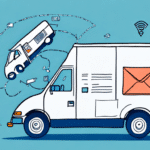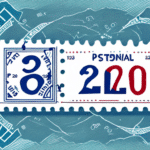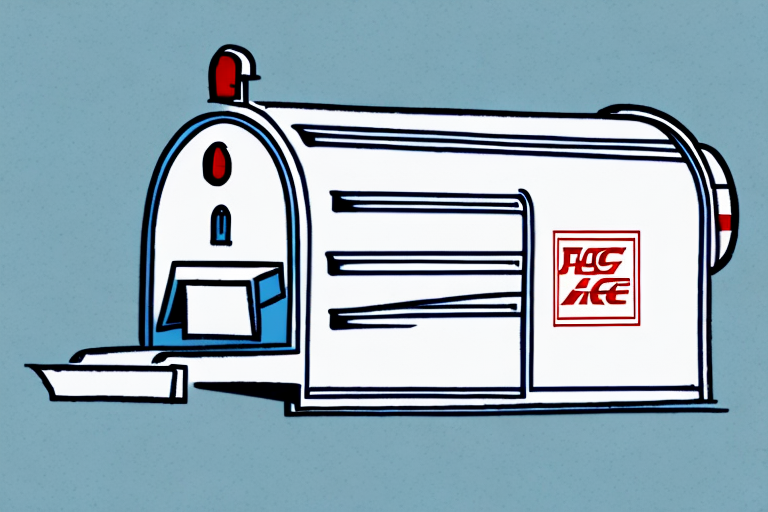What Are the First Class Postage Rates in 2023?
If you're a small business owner or a consumer who relies on the postal service for communication and shipping, understanding the first class postage rates is essential. In this article, we will delve into the history of first class postage rates in the United States, the factors influencing these rates, the anticipated changes for 2023, and effective strategies to minimize postal costs amid rising rates. Additionally, we'll explore the future of postal services, examining emerging trends and technological advancements that are reshaping the way we send mail.
A Brief History of First Class Postage Rates in the US
The evolution of first class postage rates in the United States reflects the nation's economic and technological changes. The first official postal system was established in 1775 by Benjamin Franklin, but it wasn't until 1847 that the first postage stamps were introduced. By 1863, the U.S. Post Office standardized postage rates, setting a 3-cent rate for domestic letters and a 6-cent rate for foreign letters. These rates have fluctuated over the decades due to inflation, economic shifts, and policy changes.
A significant milestone in postal history was the introduction of the Forever Stamp in 2007. This stamp, featuring the Liberty Bell, guarantees that the purchaser will pay the current first class rate regardless of future increases. This innovation provided consumers with stability and reduced the inconvenience of frequent rate adjustments. [U.S. Postal Service - Forever Stamp](https://www.usps.com/evergreen/forever-stamp.htm)
Understanding the Factors That Determine Postage Rates
First class postage rates are influenced by a combination of operational costs and external economic factors. Key determinants include:
- Transportation Costs: Expenses related to the movement of mail through various stages of the delivery network.
- Labor Costs: Wages and benefits for postal workers involved in sorting, processing, and delivering mail.
- Material Costs: Expenses for paper, ink, postage equipment, and other supplies necessary for mail processing.
- Regulatory Considerations: Decisions made by the Postal Regulatory Commission (PRC) based on the financial health of the Postal Service.
The PRC regularly reviews and adjusts postage rates to ensure the sustainability of postal operations. Recent challenges, such as declining mail volume and increased competition from digital communication platforms, have put additional pressure on the Postal Service's finances, necessitating rate adjustments. [Postal Regulatory Commission](https://www.prc.gov)
How First Class Postage Rates Will Change in 2023
In 2023, the PRC has approved an increase in first class postage rates. While the exact rate was pending as of the latest update, projections indicated an increment of at least a few cents above the previous 58-cent rate per stamp. This adjustment is primarily attributed to rising operational costs and a decline in traditional mail volumes.
The rate hike is not limited to first class letters but also affects postcards and international mail. According to the latest [U.S. Postal Service Rate Announcement](https://about.usps.com/postal-bulletin/2023/pb22330/html/info2_000.htm), the new first class rate is set at $0.60 per stamp, representing a modest increase aimed at bridging financial gaps caused by reduced mail traffic.
Potential consequences of this increase include a further decline in the use of traditional mail services as consumers and businesses increasingly prefer digital communication methods. This shift could exacerbate financial strains on the Postal Service but also prompts innovations and alternative revenue streams.
Comparing First Class Postage Rates to Other Postal Services
While first class postage remains a staple for many, it's essential to compare it with other available postal services to make informed decisions:
- Priority Mail: Starting at $8.45 for flat rate boxes, Priority Mail offers faster delivery and tracking but comes at a higher cost.
- Express Mail: The fastest option, with rates beginning at $26.35, providing overnight delivery services.
- Media Mail: Designed for shipping educational materials, Media Mail is more affordable but comes with restrictions on the types of content and longer delivery times.
Private carriers like FedEx and UPS offer a range of services that may be faster or provide more advanced tracking capabilities, though typically at higher prices. Comparing these options based on cost, delivery speed, and service reliability is crucial for optimizing shipping strategies.
The Impact of Changes in First Class Postage Rates on Small Businesses and Consumers
Rising first class postage rates in 2023 are poised to affect both small businesses and individual consumers significantly:
- Small Businesses: Increased shipping costs can erode profit margins, especially for businesses that rely heavily on mail for marketing and transactions. This may force businesses to adjust pricing strategies or seek alternative shipping solutions.
- Consumers: Higher postage rates can lead to increased costs for personal communications and online shopping deliveries. Frequent shippers may feel the financial strain more acutely.
Additionally, rural communities, which depend more on postal services due to fewer alternative delivery options, may experience a more pronounced impact from rate increases. Policymakers need to consider these effects to mitigate potential negative outcomes on these vulnerable groups.
Strategies for Reducing Your Postal Costs Amid Rising First Class Postage Rates
To combat rising postal costs, consider implementing the following strategies:
1. Switch to Digital Communication
Utilize email, online messaging, and digital document sharing to reduce the reliance on physical mail. This not only cuts down on postage costs but also increases efficiency.
2. Take Advantage of Bulk Mail Rates
If you regularly send large volumes of mail, applying for bulk mailing discounts can lead to significant savings. The USPS offers various bulk mailing options tailored to different needs. [USPS Bulk Pricing](https://www.usps.com/business/prices.htm)
3. Optimize Your Mailing List
Ensure your mailing list is accurate and up-to-date to minimize undeliverable mail and wasted postage. Segmenting your list for targeted mailing can also enhance response rates and reduce overall mailing frequency.
4. Invest in Mailing Technology
Adopting technologies like postage meters and automated mailing software can streamline your mailing process, ensure accurate postage calculation, and potentially unlock discounts. These tools can also reduce labor costs associated with manual mailing tasks.
5. Explore Alternative Delivery Services
Consider using private carriers such as FedEx or UPS for certain shipments, especially if they offer better rates or services that align more closely with your needs.
The Future of Postal Services: Predictions and Trends for 2023 and Beyond
The landscape of postal services is undergoing significant transformation, driven by technological advancements and changing consumer behaviors. Key trends and predictions include:
- Decline in Traditional Mail: Continued reduction in letters and advertisements as digital alternatives become more prevalent.
- Expansion of Package Delivery: The rise of e-commerce is increasing demand for package delivery services, prompting the Postal Service to expand and enhance these offerings.
- Integration of Drones and Autonomous Vehicles: Emerging technologies are being tested for delivering mail and packages more efficiently. While promising, regulatory and safety challenges must be addressed before widespread adoption.
- Sustainability Initiatives: Growing consumer demand for eco-friendly practices is pushing postal services to adopt sustainable packaging and optimize delivery routes to reduce their carbon footprint.
These trends suggest that the Postal Service will need to innovate and diversify its services to remain competitive and relevant in the digital age.
Exploring Alternatives to Traditional Postal Services for Cost Savings and Convenience
Beyond the USPS, several alternative options can offer cost savings and increased convenience:
- Private Carriers: Companies like FedEx and UPS provide a variety of shipping options with different pricing structures and service levels.
- Digital Mailing Services: Platforms such as Earthlink allow users to send physical mail through an online interface, often at reduced costs.
- Virtual Mailboxes: Services like Virtual Post Mail enable individuals and businesses to manage their physical mail digitally, offering features like mail forwarding, scanning, and storage.
These alternatives can provide greater flexibility and potentially lower costs, especially for businesses looking to scale their mailing operations efficiently.
How Technology is Revolutionizing the Way We Send Mail, and Its Implications for Postage Rates
Technological advancements are significantly altering mail delivery methods, leading to both opportunities and challenges for postage rates:
- Drone Delivery: Drones offer the potential for faster and more cost-effective package deliveries, particularly in remote areas. However, regulatory hurdles and safety concerns must be addressed before widespread implementation.
- Autonomous Vehicles: Self-driving trucks and delivery robots can enhance efficiency and reduce labor costs, potentially lowering overall shipping expenses.
- E-commerce Integration: The seamless integration of postal services with e-commerce platforms facilitates smoother transactions and inventory management, increasing the volume of package deliveries.
These technologies not only improve delivery efficiency but also influence postage rates by altering the cost structure of postal services. As these innovations become more mainstream, they may lead to more competitive pricing and new service models within the postal industry.
In summary, the increase in first class postage rates in 2023 presents both challenges and opportunities for businesses and consumers. By adopting strategic approaches to mailing and staying informed about industry trends and technological advancements, stakeholders can navigate the evolving postal landscape effectively.






















